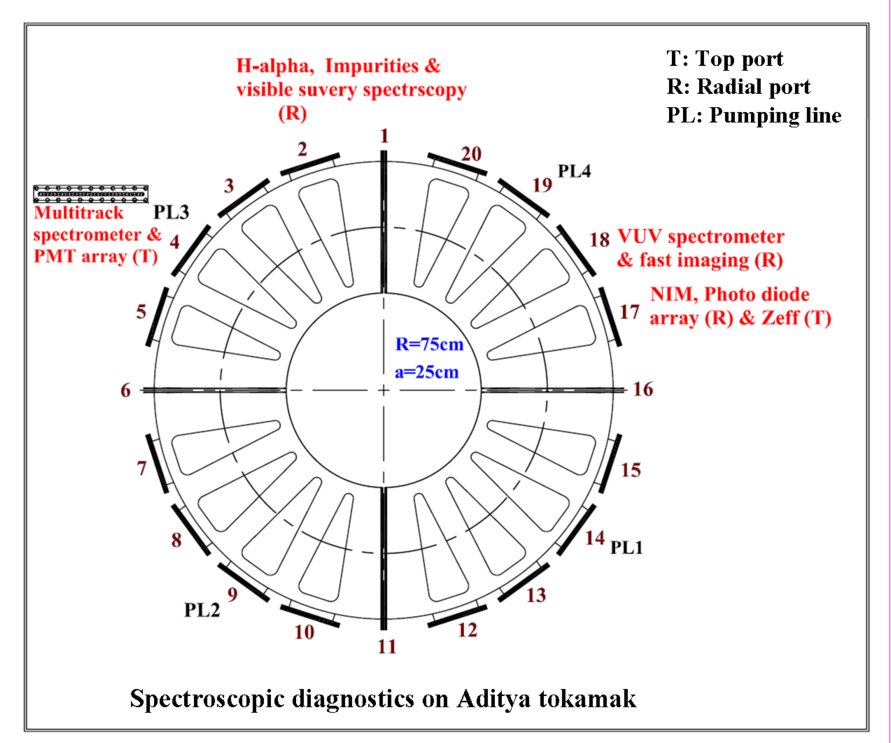SPECTROSCOPY
Spectroscopy Diagnostics Division is engaged in the setting up, operation and regular maintenance of a wide variety of spectroscopic diagnostics on the Aditya tokamak. Some of them are used for the routine operation of the tokamak, while others are used for more specific research activities related to Aditya plasma. On the tokamak, the division has an elaborate footprint all along the toroidal and poloidal span of the vessel covering an appreciable part of the electromagnetic spectrum through its diagnostics. Spectroscopic systems deployed on Aditya have noteworthy contribution towards machine safety, successful plasma operation as well as significant physics research since the machine has been erected.
-------------------
1. Difference in diffusion coefficient is detected with O V impurity transport studies using multi-track spectroscopy and STRAHL impurity transport code.
2. Plasma formation zone during the initial startup has been identified using PMT based array.
3. Fast visible imaging of Adiya plasma at a wide angle is accomplished at 6 kHz and the gas puff cloud at 12 kHz.
--------------
1. Fiberscope based Optical system To monitor temporal behavior of H-alpha, H-beta, O II, C II and C III emission in the visible range with the line of sight terminating on inner wall, ICRF antenna and inboard and outboard limiter tiles. 2. Zeff measurement system To estimate plasma Zeff, which indicates purity of the plasma. 3. Visible survey spectroscopy It monitors the impurity emission in every discharge. Identifying and observing the change in the spectral lines, impurity behavior can be studied. It consists of one three channel broadband (350 to 900 nm) miniature and one 0.5 m spectrometers. 4. Space resolved VUV Spectroscopy System It consists of one meter normal incidence spectrometer and scanning mirror to change the viewing chord. Using PMT detector temporal evolution of a pre-selected spectral lines from impurity emission in plasma core can be monitored But with ICCD detector many spectral lines (within 15 nm) can be recorded with in pre-selected spectral range in VUV. 5. EUV & VUV Survey Spectroscopy It monitors the VUV impurity emission in every discharge, impurity behavior can be studied by identifying and then observing the change in the spectral lines. System consists of three grating with different spectral resolution covering 10 to 180 nm ranges. Due to broad wavelength coverage, spectral emission from plasma core and edge can be monitored simultaneously enabling study of impurity transport and radiation loss. 6. Multi-track Spectroscopy It monitors the impurity emission in visible wavelength range in every discharge. System consists of 1m high resolution imaging spectrometer and 9 fibers coupled on entrance slit which enable measuring eight lines of sight simultaneously in every shot. Light is collected from eight radial locations viewing from top to bottom of Aditya tokamak and fed to the spectrometer to monitor the spectrum. 7. Fast visible imaging diagnostics Fast framing camera captures plasma image either at a wide angle or tangentially. can achieve 6 kHz at full resolution and 90 kHz at a limited region of interest. 8. PMT array based system This diagnostics measures the spatial profiles of H-alpha and H-beta (especially during breakdown phase of discharge) using two 8 channel PMT arrays. |


